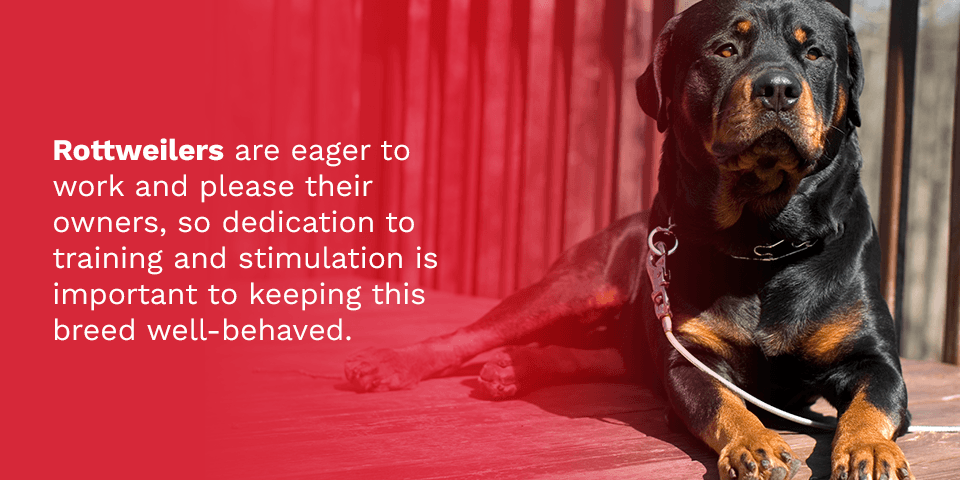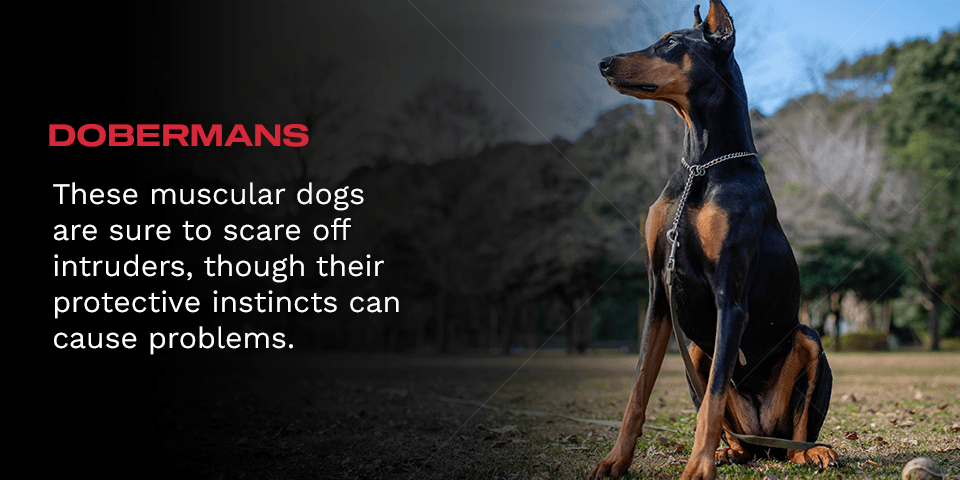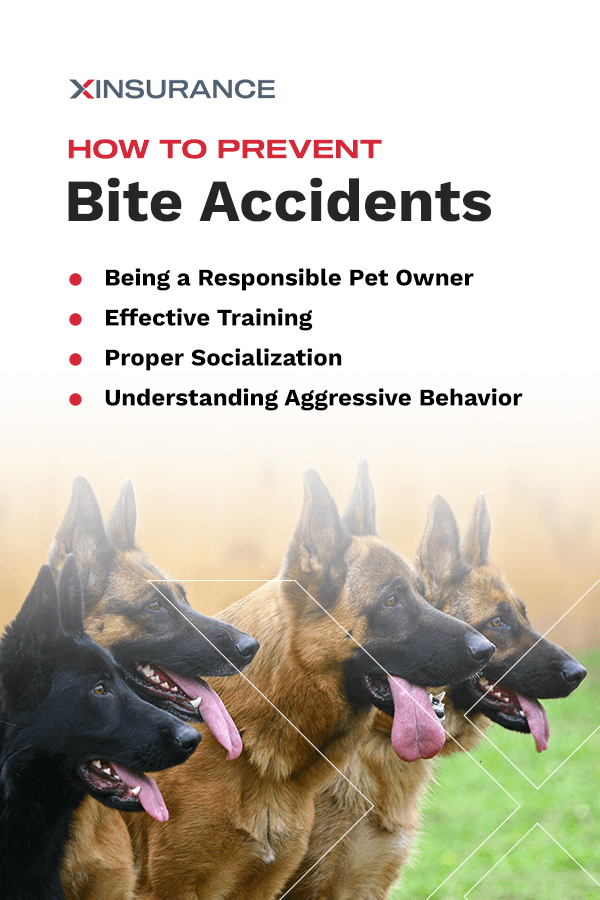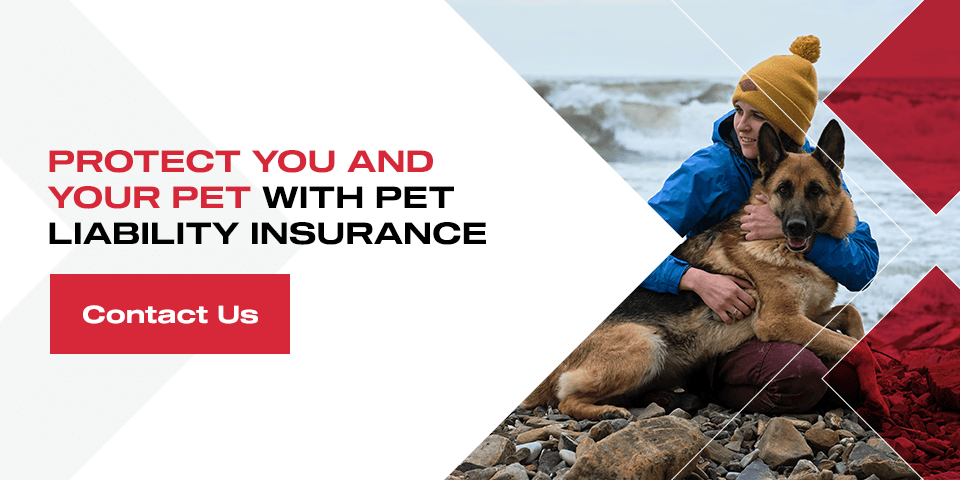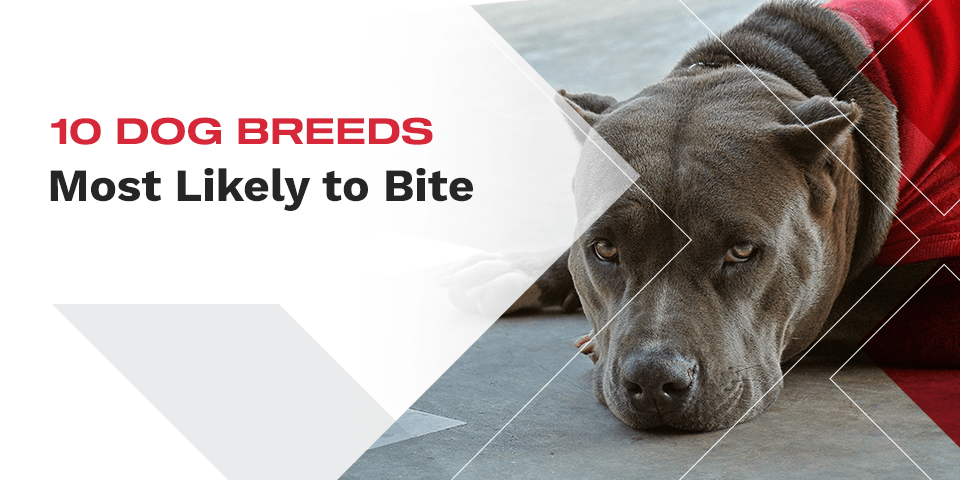
10 Dog Breeds Most Likely to Bite
Dogs are often fun and loving, though when they bite, they can cause serious problems. Over 4.5 million people get bit by dogs every year in the United States, and nearly one in five people who were bit need medical attention. Learn what dog breeds are considered most likely to bite and how you can work to prevent dog bites from happening.
10 Dog Breeds That Bite the Most
Realistically, any dog has the potential to inflict a damaging bite under certain circumstances. For example, Labrador retrievers are known to be family-friendly dogs, though the breed was responsible for a dog bite fatality in 2020. While lack of training and poor circumstances can cause any dog to lash out, there are several dog breeds that may bite more often than others. Keep in mind, however, that large dogs are cited more often because they’re capable of inflicting more serious injuries.
Here are 10 specific breeds of dogs that tend to be involved in dog attacks.
1. Pit Bulls
Pit bulls are one of the most commonly cited dog breeds when it comes to fatal dog attacks. They have a reputation for being an aggressive breed of dog and are often on lists of breeds people are unable to keep in certain areas or spaces like apartment buildings or neighborhoods. Pit bulls have been largely bred to be strong and aggressive for guarding and fighting purposes. They’re most often bred for illegal dogfighting, which results in abusive conditions.
Abuse and mistreatment can play a large role in a dog’s aggression, and pit bulls are often subjected to such conditions. In situations like this, dogs learn to be aggressive and will bite humans as a result. However, studies have shown that a pit bull’s aggression is largely due to its living conditions, and they aren’t necessarily naturally dangerous dogs.
While many pit bulls can be held responsible for dog bites, it’s also worth noting that their reputation makes people quick to blame the breed. There are other dog breeds that have similar physical features as pit bulls, so people assume that’s what they are.
For example, Staffordshire terriers bear a significant resemblance to pit bulls. At a quick glance or without proper knowledge, a Staffordshire terrier attack can easily be misclassified as a pit bull attack. This can lead to inaccurate dog bite statistics because similar-looking breeds get grouped into the pit bull category.
If pit bulls do attack, they can cause serious injury or death because of how powerful they are. If you have or are considering this breed, know your behavior and dedication to training will impact the risk of your dog biting other animals or humans.
2. Rottweilers
Rottweilers are large, powerful dogs with a strong bite. Though originally bred to herd cattle and other livestock, today Rottweilers are often used as guard dogs and for search and rescue. They’re known to be protective, which can result in aggressive behavior. Just like many other breeds of dogs, Rottweilers need exercise, mental stimulation and proper socialization — without these factors, this breed can be destructive and their behavior can get out of control quickly.
Rottweilers are eager to work and please their owners, so dedication to training and stimulation is important to keeping this breed well-behaved. Their devotion and inclination to protect can be positive characteristics, though knowing the potential risk of biting is crucial to protect you, your dog and others.
3. German Shepherds
German shepherds are a popular breed for their beauty, protective instincts and desire to work. German shepherds are common choices for police and military roles because they’re capable of being aggressive to protect themselves and others.
Without proper training, a German shepherd’s protective instincts can quickly turn into aggression toward strangers. What makes them effective guard dogs can also cause significant risks in certain situations. Hostile and aggressive behavior toward strangers may be helpful in some situations, though it can make inviting new friends over risky business.
While aggressive behavior serves this breed well in police settings, it won’t be helpful in your home. German shepherds are an extremely intelligent breed, so provide proper training to help mitigate aggressive tendencies.
4. Chihuahuas
When you’re thinking about dog bites, large breeds typically come to mind because they often inflict the most damage and can be lethal. Chihuahuas are often overlooked as a risk for dog bite attacks because they’re small. However, Chihuahuas are typically listed as one of the most aggressive dog breeds. While their bite won’t cause as much damage as a larger breed, it can still hurt and potentially lead to injury.
Chihuahuas are known to growl, bark, nip and bite at both adults and kids. Despite their small stature, this breed can easily instill fear in kids and adults alike.
5. Bully Breeds
Bully breeds are bulldog-type breeds, including:
- American bulldogs
- Bull terriers
- English bulldogs
- Boxers
- Cane corso
- Mastiffs
These breeds can be calm, though when agitated, they can inflict powerful bites. Bulldogs can turn aggressive on a whim, going from well-behaved to biting and growling within minutes. Though some breeds in this category have smaller statures than others, they all tend to be quite muscular and can easily cause serious injuries.
6. Terriers
Another feisty breed of small dogs that bite, terriers, were bred for rodent hunting, so they instinctively bite their prey. Due to their short fuses and tendency to get agitated, terriers will use their biting instinct on humans. Kids are often more likely to set off the terrier breed and often fall victim to their bite.
Antagonizing this breed will likely lead to aggressive behavior and potentially a painful bite. Like other small breeds, a terrier bite is unlikely to be fatal, though it can instill fear in kids and make them undesirable to be around.
7. Dalmatians
Like many dogs on this list, Dalmatians can be great companions, but they’re also prone to aggressive behavior under bad circumstances. They were bred to run alongside carriages and horsemen to ward off bandits and predators during travels. Their protective and guarding instincts and tendencies are often the cause of potential aggression and biting. Additionally, poor breeding habits can lead to stubbornness and increase the potential for this breed to be aggressive.
Ultimately, Dalmatians greatly benefit from early training and socialization. Without adequate exercise or proper socialization, this breed is known to be destructive and aggressive, snapping and biting people and chewing on your belongings.
8. Cocker Spaniels
While you may expect some of the other dogs on this list to be no-brainers, one you may not expect is the cocker spaniel. This breed is a popular family dog for its cute face and soft ears. Despite that, cocker spaniels can bite hard or attack people when they feel threatened or get upset. Much like the other smaller breeds, they’re known to get upset easily and may not be the best dog around young kids.
9. Tosa Inu
Tosa Inus are a large dog breed with an extremely powerful bite. Their bite strength ranks in the top five strongest bites with a strength of 556 pounds per inch (PSI). Breeders in Japan crossbred different European dogs to create the Tosa Inu. Their goal was to produce a powerful, undefeatable breed for dogfighting. These powerful breeds have taken many human lives in fatal dog attacks over the years, and as a result, they’re banned in many countries, though the United States isn’t one of them.
The Tosa Inu is often feared because of its large size and bite that’s capable of inflicting serious pain. However, with proper training, they can be friendly.
10. Dobermans
Dobermans are a popular breed because they’re intelligent, strong and adaptive. They’re very loyal and protective, making them another popular choice for defense and police dogs. These muscular dogs are sure to scare off intruders, though their protective instincts can cause problems. A Doberman has a powerful bite of about 245 PSI, though they’re capable of being trained to be gentle with people.
How to Prevent Bite Accidents
You may have noticed that many of the breeds listed above are capable of being well-behaved dogs under the right ownership and with proper training. There are many individual dogs of each of these breeds that are well-trained and gentle.
While some dogs may be prone to aggressive behaviors due to their breed’s history, dogs are also very much a product of their environment. Most often, regardless of breed, dogs are aggressive as a reflection of the way they’ve been treated, a lack of training or fear.
Whether you already have one or are considering getting a dog from the breeds listed — or any breed — knowing how to prevent a dog bite accident is essential. The key to doing this lies in being a responsible pet owner, training, socialization and understanding your dog’s behavior.
Being a Responsible Pet Owner
Remember — dogs are a product of their environment. If you are or plan to become a dog owner, keep in mind that the way you treat your dog will affect how your dog behaves around you, kids, other people and pets. Much like how you can’t demand respect from someone if you don’t give respect to them, if you treat a dog poorly, it will likely react poorly.
Being a responsible pet owner goes beyond giving your dog good conditions to live in. Responsible dog ownership also means:
- Choosing a dog breed that’s right for your living situation and family situation
- Providing adequate exercise for the breed
- Watching your dog when it interacts with other animals or people
You should also take into account everything that may contribute to a dog bite accident — from stressful situations to meeting new people — and work to prevent it from happening. You may warn strangers not to pet your dog when you’re out for a walk, for instance.
Effective Training
Begin training your dog as early as possible. When dogs learn proper behaviors from a young age, they can be less likely to act out as they grow. The sooner you start training your puppy, the sooner you’ll be able to form a positive relationship with the dog, making it more likely for them to learn from you.
Effective training includes reinforcing positive behavior with rewards rather than disciplining bad behavior with punishments. Consistent training is also crucial, as it keeps good behavior fresh in their minds and helps them learn desired behavior quicker. You can learn ways to train your dog online or look for local dog training classes.
Proper Socialization
Socializing your dog when it’s a puppy helps expose it to new people, animals, objects and places so they become more familiar with a variety of experiences. Socialization can help your dog feel comfortable and at ease in different situations, instead of feeling stressed or scared — two feelings that can lead to biting. It’s best to start socializing your dog as soon as possible and give them the chance to become comfortable at their own pace.
Do your best to remove your dog from situations that make them feel uncomfortable so they can have positive experiences. A socialized dog will be more trustworthy and enjoyable to take places or have around other people. Unsocialized dogs can become a risk to others and to you.
Understanding Aggressive Behavior
Sometimes, aggressive behavior can go unnoticed or is mistaken for play since dogs like to play a bit rough. It’s important to know what aggressive behavior looks like so you can take action before a bite accident occurs. Here are three types of aggression to watch for in your dog:
- Dominant aggression: Unfixed male dogs can display dominant aggressive behavior. This may look like a number of things, including mounting dogs or people’s legs, lunging at people, barging through doors, blocking someone’s pathway, low barks and snarls or staring at other dogs and people.
- Fear aggression: When dogs are scared, they can be more inclined to bite to protect themselves or others. Your dog may display submissive body language when they feel scared or stressed. Avoid approaching or touching, or letting others do so, if your dog holds its ears back, lowers its head and body, tucks its tail between its legs, avoids eye contact or pees on the floor.
- Possessive aggression: Possessive aggression is common among dogs who had to compete for food, toys, people or other resources. This type of aggression is common in rescue dogs or when a new rival is introduced. Possessive aggression might look like your dog growling when another dog comes near them while eating.
Aggressive behavior will look different in every situation, so learning the signs can help you identify when your dog may become a risk to you and others. Try to be reassuring and comfort your dog rather than punishing them when they display signs of aggression. Recognize situations that cause your dog to exhibit aggressive behavior, and limit them whenever possible.
Protect You and Your Pet With Pet Liability Insurance
While the dogs listed above are considered more likely to bite, any dog can bite or attack in the right circumstances. With pet liability insurance from XINSURANCE, you can be protected if your dog injures someone or another animal or damages property. Pet insurance helps cover third-party property repairs and medical bills in the event that your pet’s behavior results in a lawsuit against you. If your dog is considered a dangerous breed or is more likely to bite, XINSURANCE can help you find coverage.
Contact us to request a free quote and learn more about pet insurance.

Rick J. Lindsey hails from Salt Lake City, Utah. He began working in the mailroom of his father’s Salt Lake City insurance firm, getting his introduction to the business that became his lifelong career. Rick J. Lindsey quickly rose through the ranks while working in nearly every imaginable insurance industry job. As an entrepreneur, specialty lines underwriter, claims specialist, risk manager, and a licensed surplus lines broker, Rick J. Lindsey is highly skilled in all levels of leadership and execution. As he progressed on his career path, Rick J. Lindsey discovered an urgent need for insurers willing to write policies for high-risk individuals and businesses. He was frequently frustrated that he could not provide the liability protection these entities desperately needed to safeguard their assets. He also formed the belief that insurance companies acted too quickly to settle frivolous claims. Rick J. Lindsey decided to try a different approach. He started an insurance company and became the newly formed entity’s CEO. This opportunity has enabled Rick J. Lindsey to fill a void in the market and provide a valuable service to businesses, individuals, and insurance agents who write high-risk business. XINSURANCE also specializes in helping individuals and businesses who live a lifestyle or participate in activities that make them difficult for traditional carriers to insure. If you’ve been denied, non-renewed, or canceled coverage, don’t give up quite yet. Chances are XINSURANCE can help.

